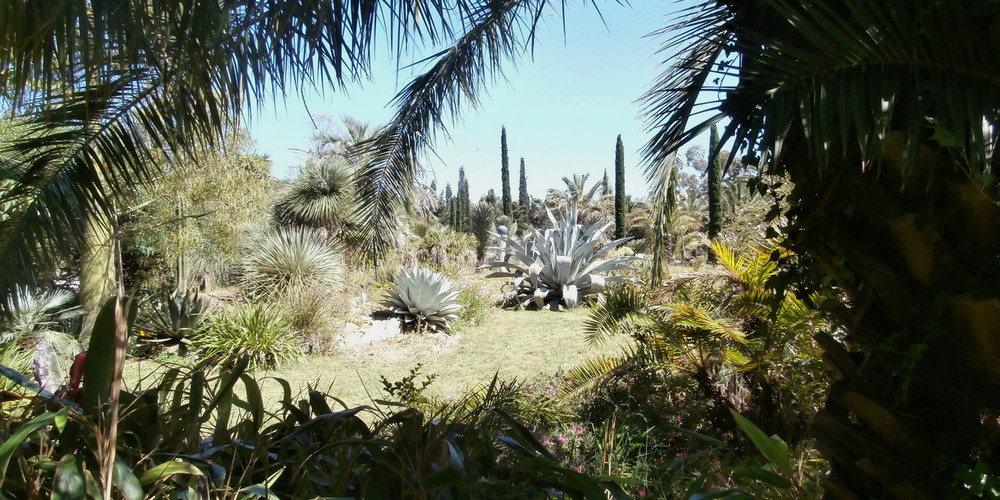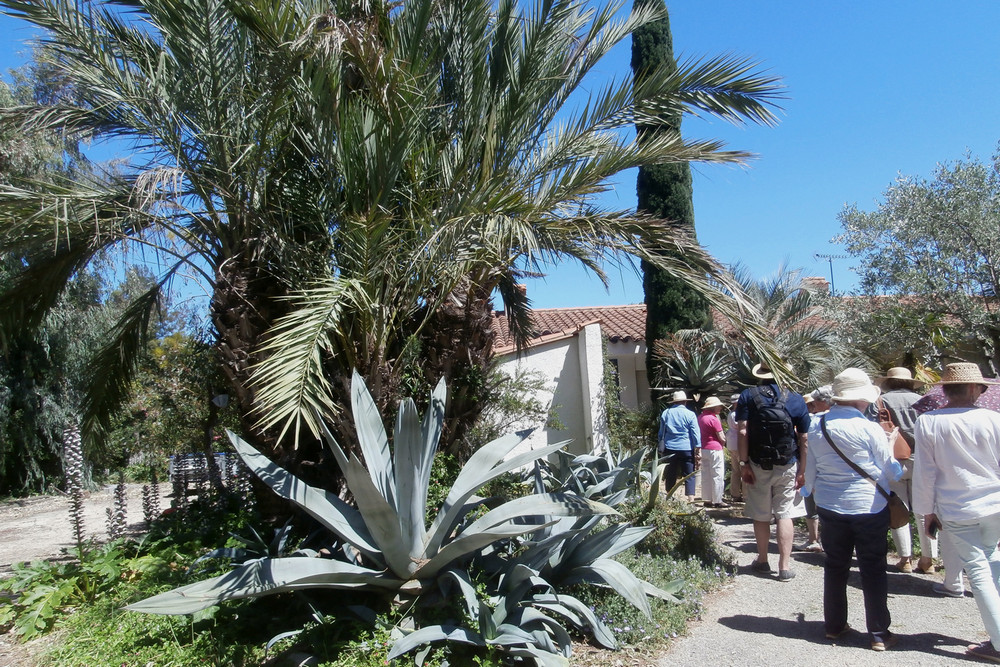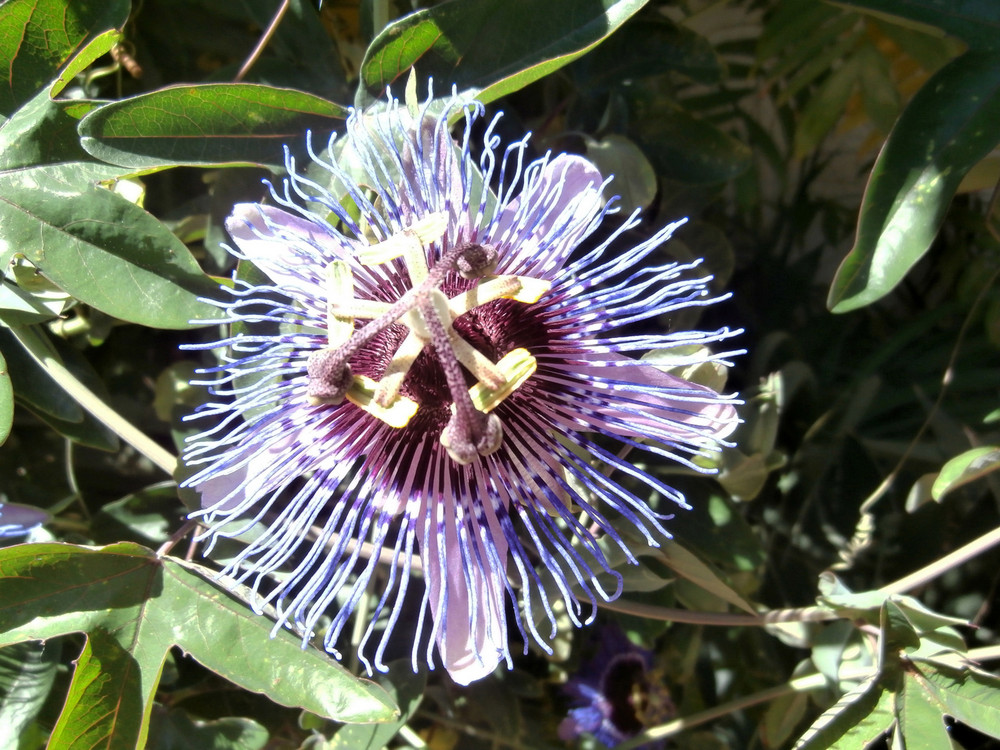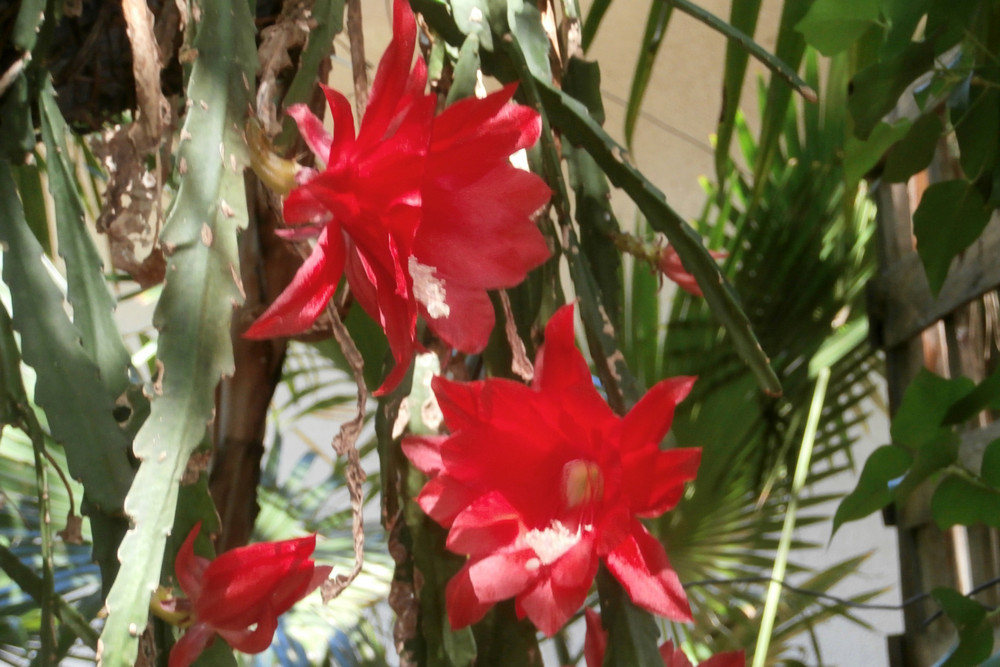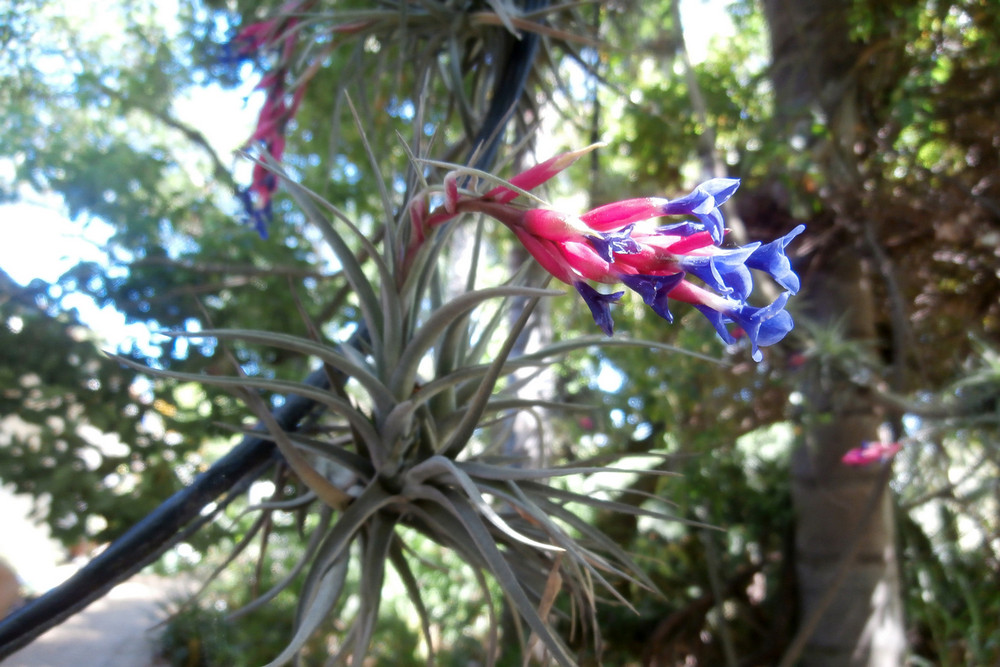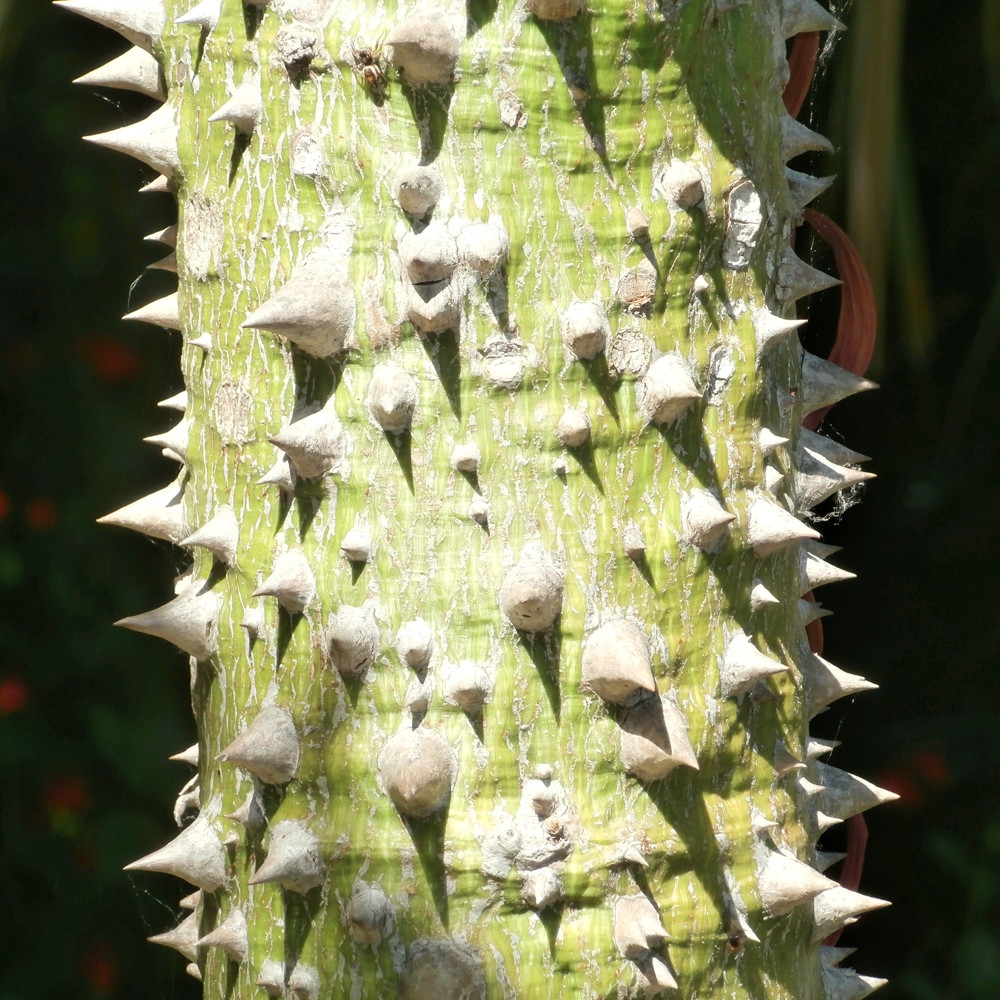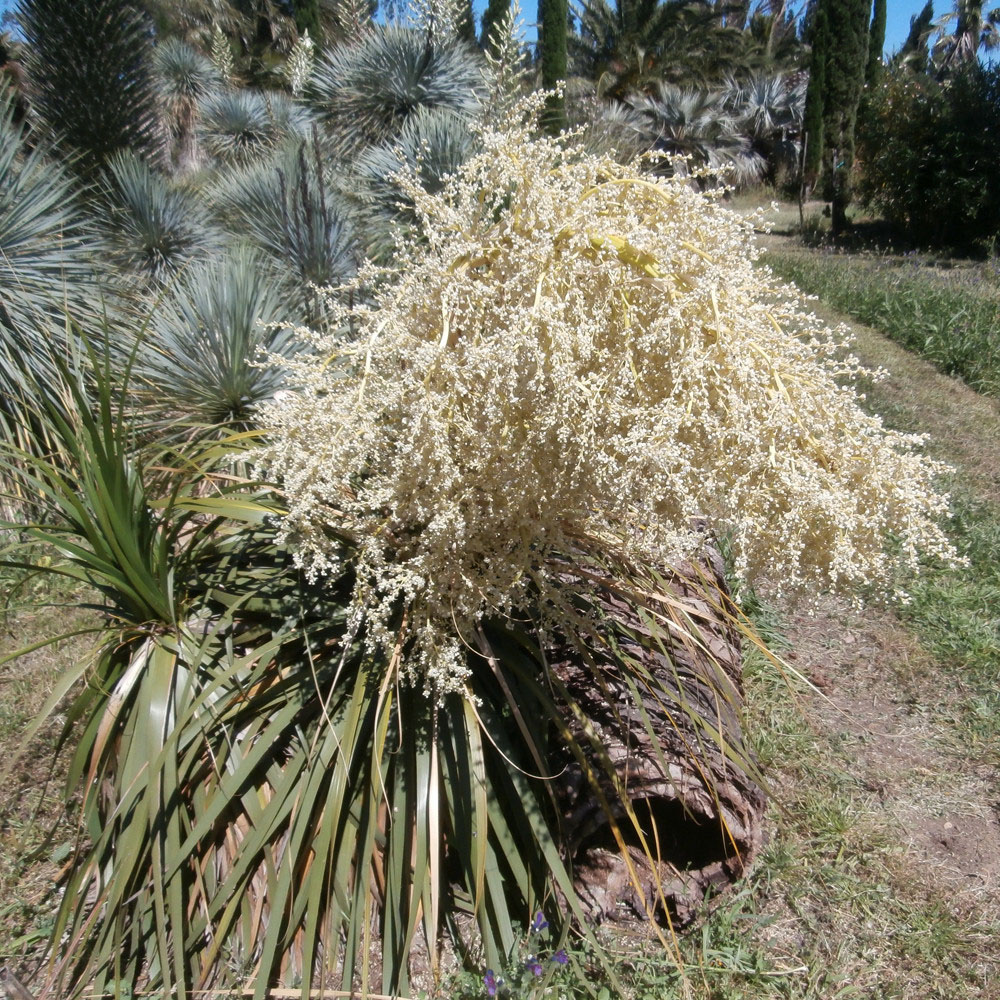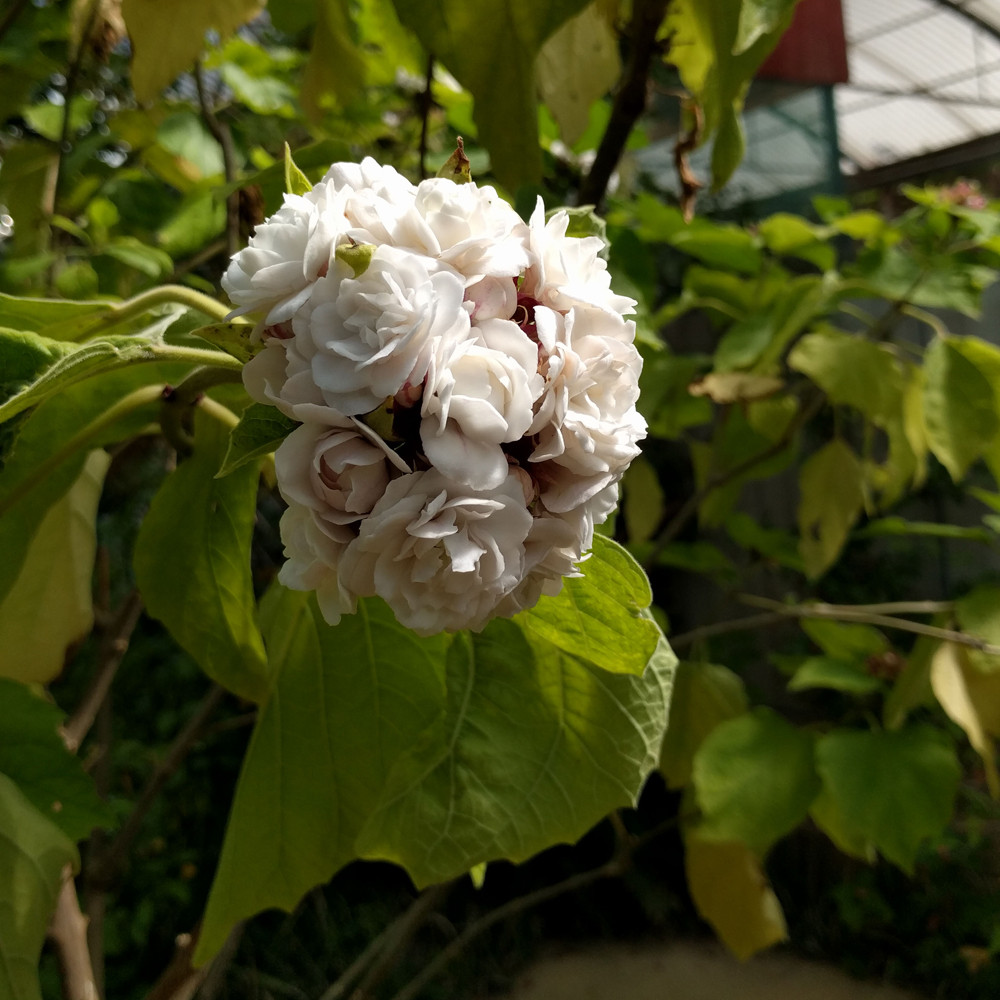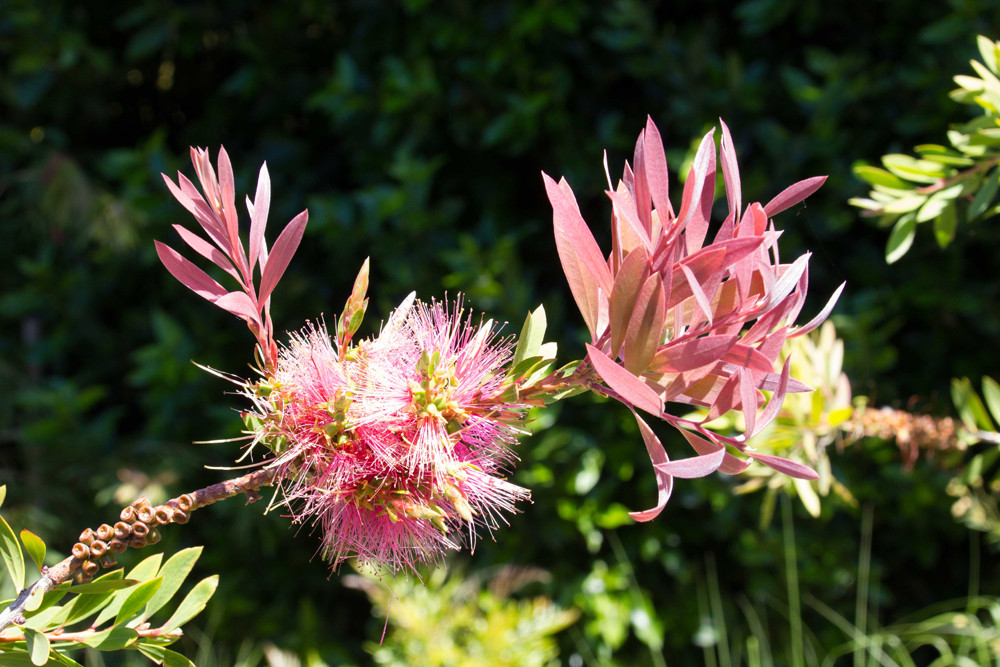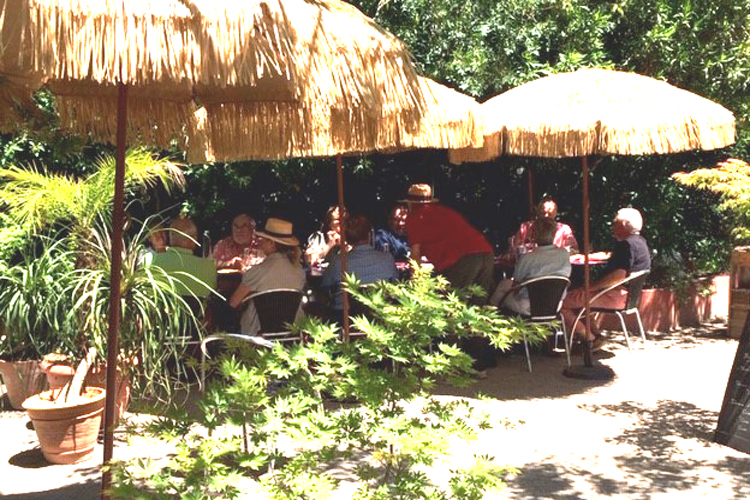May / mai 2019
The Annual General Meeting 2019, Céret, Pyrénées-Orientales
L’Assemblée Générale 2019, Céret, Pyrénées-Orientales
Click on an image to enlarge it / Cliquez sur une image pour l’agrandir
The 2019 AGM, organised by Lynn Hall and Penny Parkinson, was held in Céret, in the Pyrénées-Orientales. After the meeting, James and Helen Basson gave a talk entitled ‘Lessons from the Landscape – translating landscape into a garden’ and in the evening we enjoyed Catalan cuisine at the Restaurant Le France.
L’AG 2019, organisée par Lynn Hall et Penny Parkinson, s’est tenue à Céret, dans les Pyrénées-Orientales. Après la réunion, James et Helen Basson ont donné une conférence intitulée « Les leçons du paysage – traduire le paysage en jardin » et le soir, nous avons dégusté une cuisine catalane au restaurant Le France.
Visite du jardin de Chantal et Pierre Bianchi, Mas Reynès l’Oasis
We counted ourselves very fortunate that Lynn and Penny had been able to organise a visit to this garden. Pierre Bianchi is well known in the region for his amazing garden and for his work with PlantaExotica, la Societé française d’acclimatation.
Nous avons eu beaucoup de chance que Lynn et Penny aient pu organiser la visite de ce jardin. Pierre Bianchi est bien connu dans la région pour son incroyable jardin et pour son travail au sein de PlantaExotica, la Société française d’acclimatation.
We were not disappointed. Pierre welcomed us in his ‘petite forêt’ where he explained the background to the garden. He had been searching for land where he could create a garden in which to experiment with unusual and exotic plants and he bought Mas Reynès l’Oasis in 1993, in Saleilles, one of the least cold places in the Languedoc-Roussillon. The situation is such that summers are usually cooler than in, for example, Montpellier, while winters are mild, frost is rare and the protected nature of the site means that plants un-freeze during the daytime even if there is severe frost. The protected nature of the site is also enhanced by the plantation of 3000 m2 of windbreaks – parasol pine and holm oak. And, there is water! The whole garden contains hundreds of interesting, unusual and fascinating plants and the account that follows mentions just a few of the amazing plants we saw.
Nous n’avons pas été déçus. Pierre nous a accueillis dans sa ‘petite forêt’ où il nous a raconté l’histoire du jardin. Il cherchait un terrain où il pourrait créér un jardin afin d’expérimenter des plantes exotiques et rares et c’est ainsi qu’il acheta Mas Reynès-l’Oasis en 1993, à Saleilles, un des endroits les moins froids du Languedoc-Roussillon. L’emplacement est tel que les étés sont généralement plus frais que, par exemple, à Montpellier, alors que les hivers sont doux, le gel y est rare et, du fait que le site est bien protégé, les plantes ont le temps de dégeler pendant la journée même en cas de gel sévère. La protection naturelle du site est renforcée par la plantation de 3000 m2 de brise-vents – pin parasol et chêne vert. Et, il y a de l’eau ! Le jardin contient des centaines de plantes intéressantes, pas communes et fascinantes et ce compte-rendu n’en mentionne que quelques-unes.
The petite forêt area of the garden included an amazing grapefruit tree which had grown from a chance seedling, Arbutus canariensis and other arbutus, a fifteen year old macadamia nut tree, various eucalypts and a Jurassic garden with cycads and araucaria species such as angustifolia and bidwillii.
La ‘petite forêt’ comprend un incroyable pamplemoussier issu par hasard d’un semis, Arbutus canariensis et d’autres arbousiers, un noyer du Queensland qui donne les noix de macadamia, de nombreux eucalyptus et un jardin jurassique avec des Cycadales et plusieurs espèces d’araucaria telles que angustifolia et bidwillii.
We then went onto the ‘Jardin Bleu et Blanc’ at the entrance to the house with a huge Agave neglecta, olive trees, Ceanothus ‘Concha’, Passiflora ‘Purple Haze’, Brunfelsia pauciflora, agapanthus, white roses and many more.
Puis nous sommes entrés dans le ‘Jardin bleu et blanc’ à l’entrée de la maison avec une immense Agave neglecta, des oliviers, Ceanothus ‘Concha’, Passiflora ‘Purple Haze’, Brunfelsia pauciflora, des agapanthes, des roses blanches et bien d’autres choses.
From here we progressed into a very sheltered and shady area which allowed various shade loving plants to flourish, as well as an impressive range of epiphytic plants including orchids (coelogyne, laelia, oncidium and many cymbidiums) and several kinds of bromeliads. Epiphyllums, ferns, including Platycerium, the staghorn fern, tillandsias, bilbergias, Brunnera macrophylla ‘Jack Frost’, a variegated fatsia, Aechmea gamosepala, Tetrapanax papyrifer…
A partir de là nous sommes entrés dans une partie très abritée et ombragée qui contenait de nombreuses plantes d’ombre, ainsi qu’une gamme impressionnante de plantes épiphytes dont des orchidées (coelogyne, laelia, oncidium et beaucoup de cymbidiums) et plusieurs sortes de broméliacées. Des epiphyllums, des fougères dont la fougère corne de cerf, des tillandsias, billbergias, Brunnera macrophylla ‘Jack Frost’, un fatsia panaché, Aechmea gamosepala, Tetrapanax papyrifer…
Plantings of bamboos gave an Asiatic aspect to the area too. Pierre explained that he liked to plant things with an ‘air de famille’, in other words, that resembled each other, we saw Elegia capensis, hedychiums, Dietes grandiflora, Cordyline obtecta (syn. C. kaspar) and Doryanthes palmeri.
La plantation de bambous donnait aussi un air asiatique à cet espace. Pierre nous a expliqué qu’il aimait planter des végétaux ayant un air de famille, c’est-à-dire qui se ressemblaient, nous avons vu Elegia capensis, des hedychiums, Dietes grandiflora, Cordyline obtecta (syn. C. kaspar) et Doryanthes palmeri.
After this we carried on into the wider garden, an incredible area with well- established and beautifully pruned cypresses, palms, yuccas, exotic trees such as Ceiba speciosa (syn. Chorisia speciosa), Brachychiton rupestris, Erythrina crista-galli, Xanthorrhoea glauca and an avenue of the Mexican Blue palm, Brahea armata.
Ensuite, nous avons déambulé dans le jardin principal, une zone incroyable avec des cyprès, palmiers, yuccas et des arbres exotiques tels que Ceiba speciosa (syn. Chorisia speciosa), Brachychiton rupestris, Erythrina crista-galli, Xanthorrhoea glauca et une avenue de palmiers mexicains bleus, Brahea armata.
All these plants provided a wonderful framework within which hundreds of small plants had been found a home – many cacti, succulents euphorbias, watsonias, dieramas, Banksia blechnifolia, smaller agavaceae and nolinaceae, Cussonia paniculata and C. transvaalensis, Arctotis spp, bulbines… One corner of the garden had been reserved for a variety of Mediterranean and Australian plants with Acacia cultriformis, Eucalyptus leucoxylon, Hakea suaveolens, Banksia ericifolia, more eucalypts, cistus and teucriums.
All in all, this was an excellent visit, unfortunately my pen couldn’t keep up with Pierre’s commentary so I have only mentioned a fraction of the plants we saw. At the end of the tour we were offered a much-appreciated cold drink in the shade
Tous ces végétaux offrent un magnifique faire-valoir à l’intérieur duquel des centaines de petites plantes se nichent – beaucoup de cactées, euphorbes succulentes, watsonias, dieramas, Banksia blechnifolia, de petites Agavacées et des nolinas, Cussonia paniculata et C. transvaalensis, Arctotis sp., bulbines… Un coin du jardin a été réservé à des plantes méditerranéennes et australiennes comme Acacia cultriformis, Eucalyptus leucoxylon, Hakea suaveolens, Banksia ericifolia, des eucalyptus, des cistes et des teucriums.
En fin de compte, ce fut une excellente visite ; malheureusement mon stylo ne pouvait pas suivre les commentaires de Pierre, aussi je n’ai mentionné qu’une petite partie des plantes que nous avons vues. À la fin, nos hôtes nous ont offert une boisson fraîche très appréciée.
Text and photographs: Gill Pound
Translation into French: Pierre Bianchi
Pierre Bianchi adds:
Tillandsia
We mainly grow plants that can withstand our coldest winter nights, especially, varieties of Tillandsia aeranthos which have very nice flowers and reasonable cold-hardiness, but we also have several varieties of the common T. bergeri and unusual species such as: T. edithae, T. recurvifolia syn. T. meridionalis, T. albertiana, T. dorotheae, T. streptocarpa, T. usneoides.
Nous cultivons essentiellement des espèces pouvant résister au gel de nos nuits d’hiver les plus froides, il s’agit particulièrement des variétés de Tillandsia aeranthos dont les fleurs sont superbes et dont la rusticité au froid est raisonnable, mais nous avons également plusieurs variétés du commun et très rustique T.bergeri et des espèces plus rares en culture comme : T. edithae, T. recurvifolia syn. T. meridionalis, T. albertiana, T. dorotheae, T. streptocarpa, T. usneoides.
Separately from the hardy tillandsias, on a special wire, we grow plants with attractive leaves and flowers but which can only withstand a very light frost. The wire needs to be protected against hard frost. These are: Tillandsia erici, T. exserta, T. ‘Houston Red Princess’, T. mitlaensis, T. roseoscapa, T. balbisiana, T. cacticola. These species and varieties were selected to withstand -2°C, so that they will survive even if the météo is wrong and an unexpected cold night occurs.
Nous cultivons à part de ces espèces assez rustiques pour notre microclimat, sur un autre fil, des Tillandias aux feuilles et aux fleurs plus originales mais qui ne peuvent résister qu’à de très petits gels. En cas de gel important toute cette ligne serait mise à l’abri. Ce sont: Tillandsia erici, T. exserta, T. ‘Houston Red Princess’, T. mitlaensis, T. roseoscapa, T. balbisiana, T. cacticola. Ces espèces et variétés ont été sélectionnées pour résister à -2°C, si bien que si la météo se trompait et qu’une nuit de gel inattendue survenait, elles pourraient y résister.
This policy is the general rule in our garden. Though it may seem unusual for a garden in Languedoc-Roussillon, very few of our plants are protected as most of them have been selected to withstand an average winter here without damage. Thus, in winter our garden is not marred by artificial protective materials and even so, its gardener can sleep peacefully. In fact, the most difficult weather-related danger for our plants is a long-lasting summer tramontane that, without a gardener’s intervention, would dry out or kill many young plants.
Cette façon de procéder est la règle dans notre jardin, même s’il paraît très exotique et inhabituel dans la région Languedoc-Roussillon, très peu de plantes y sont protégées l’hiver car la plupart ont été sélectionnées par des tests préalables pour résister à un hiver moyen de la plaine du Roussillon. Ainsi l’hiver le jardin n’est pas enlaidi par des protections artificielles et son jardinier dort plus tranquillement. En fait l’agression la plus dangereuse pour nos plantes est une tramontane durable l’été qui, sans jardinier dessécherait voire tuerait beaucoup de jeunes plantes.
A visit to / Visite du Tropique du Papillon, Elne
The Tropique du Papillon is a family enterprise founded by Alain Bruno, a pépiniériste specialising in sub-tropical plants. The attraction is primarily known for the tropical butterfly house but there is also much of interest in the Mediterranean garden, reflecting the family’s botanical and horticultural interests.
Le Tropique du Papillon est une entreprise familiale fondée par Alain Bruno, un pépiniériste spécialisé dans les plantes subtropicales. Ce lieu est surtout connu pour sa volière de papillons tropicaux mais présente aussi beaucoup d’intérêt pour son jardin méditerranéen, reflet de la passion de cette famille pour la botanique et l’horticulture.
The butterfly house recreates a tropical biotope in which the temperature and humidity are controlled. As butterflies feed on nectar and pollen, there are mainly flowering plants. Some are commonly known, such as buddleja and lantana but also many unusual species such as this Clerodendron fragrans.
La volière de papillons reconstitue un biotope tropical où température et humidité sont contrôlées. Comme les papillons se nourrissent de nectar et de pollen, on y trouve principalement des plantes à fleurs. Certaines sont bien connues comme les buddleias et lantanas mais d’autres sont moins répandues comme Clerodendron fragrans.
There are also some species-specific host plants to provide food for the caterpillars, although most of the butterflies are imported in chrysalis form from Asia and Central and South America. A delivery of around 300 are flown in each week and ‘hatched’ in the aviary, which can be witnessed by visitors. The butterfly farms are ‘fair trade’ and participate in nature conservation, protecting the habitat of the butterflies.
Il y a aussi quelques plantes hôtes pour nourrir spécifiquement certaines chenilles bien que la plupart des papillons soient importés sous forme de chrysalides d’Asie, d’Amérique Centrale et du Sud. Chaque semaine, environ 300 sont livrées et éclosent dans la volière, à la vue des visiteurs. Les fermes de papillons participent au « commerce équitable » et à la conservation de la nature en protégeant l’habitat des papillons.
Naturally the Mediterranean garden also promotes butterfly friendly habitats for native species.
Bien entendu, le jardin méditerranéen favorise également les habitats accueillants les espèces indigènes de papillons.
The Mediterranean garden covers a substantial area. Some parts are laid out botanically with collections of different species such as mimosa, eucalyptus and callistemon and there is a new planting of acers. They are also developing some decorative areas with plants suitable for dry Mediterranean climates, which they acknowledge have been inspired by Olivier Filippi.
Le jardin méditerranéen couvre une superficie importante. Certaines parties sont aménagées dans un esprit de jardin botanique avec des collections d’espèces différentes telles que le mimosa, l’eucalyptus et le callistemon et une nouvelle plantation d’acers est en cours. Certains espaces ornementaux avec des plantes adaptées aux climats secs de la Méditerranée, inspirés par Olivier Filippi, sont en développement.
The family is experimenting with grasses, such as this striking planting of ruby grass, Melinis nerviglumis.
Les propriétaires expérimentent des graminées comme cette impressionante plantation de graminées roses, “Ruby grass”, Melinis nerviglumis.
There is a wealth of information throughout the garden provided by rather charmingly illustrated information boards.
Il y a une mine d’informations dans tout le jardin fourni par des panneaux illustrés de manière plutôt séduisante.
An ample lunch was taken in the outside café which provided some welcome shade. Next to our table was a beautiful Cestrum aurantiacum.
Un déjeuner copieux a été pris dans le restaurant à l’extérieur sous une ombre bienvenue. A côté de notre table, une jolie Cestrum aurantiacum.
Text: Sue Shearer
Photos: Jock Shearer and Lynn Hall
![]()


